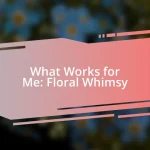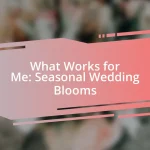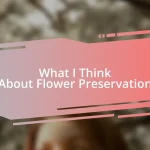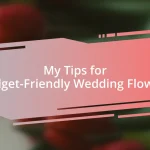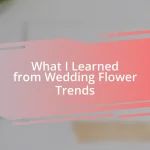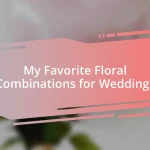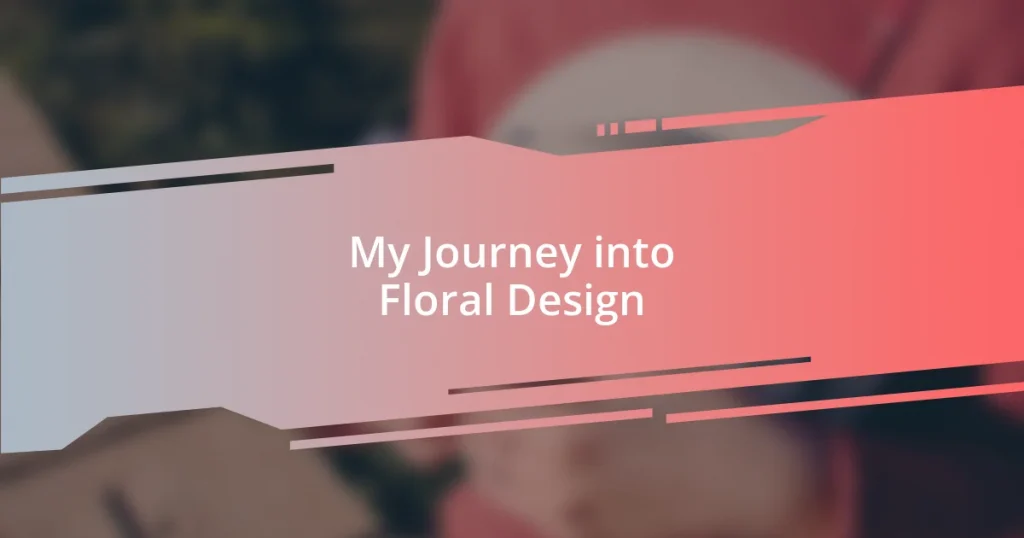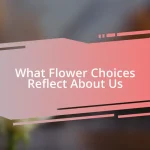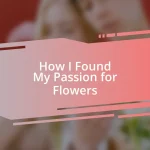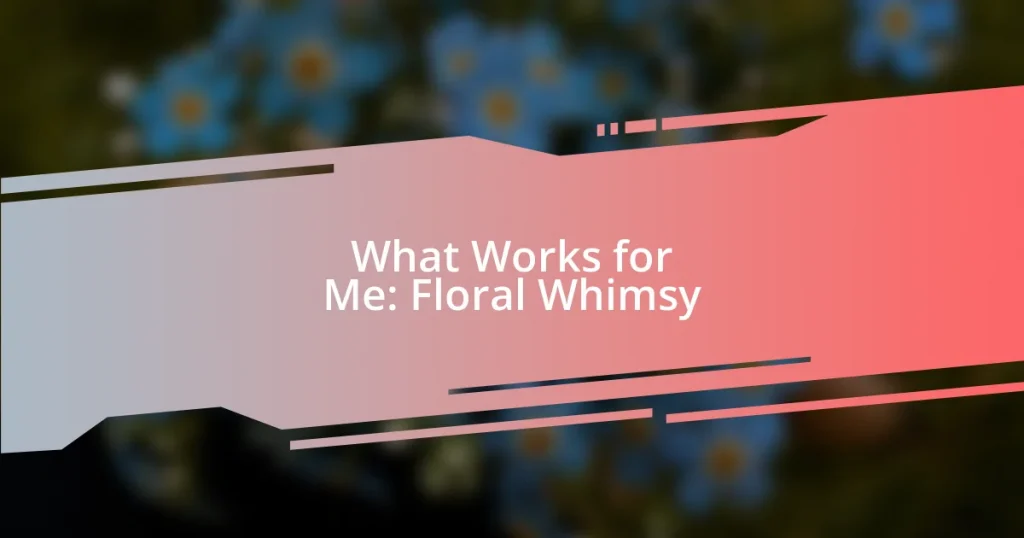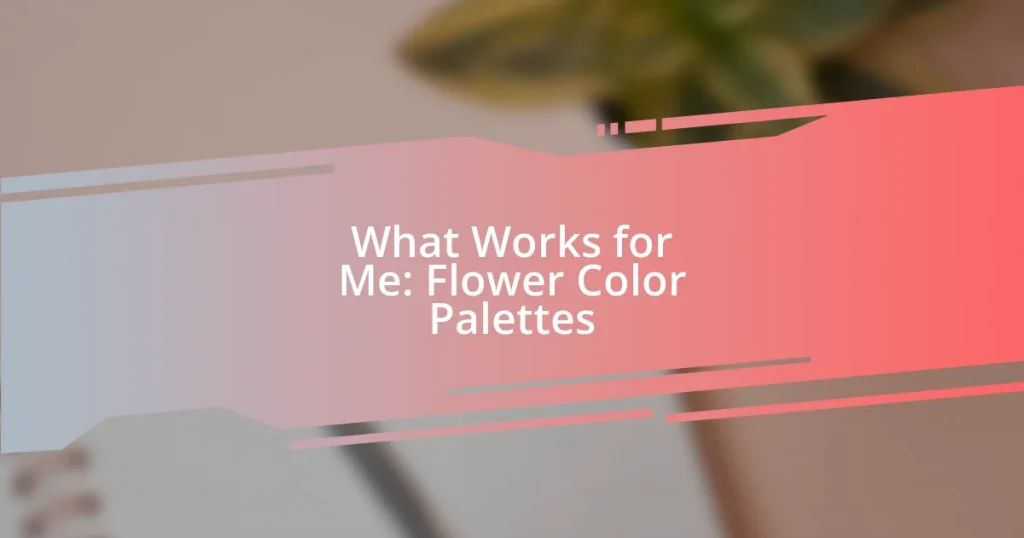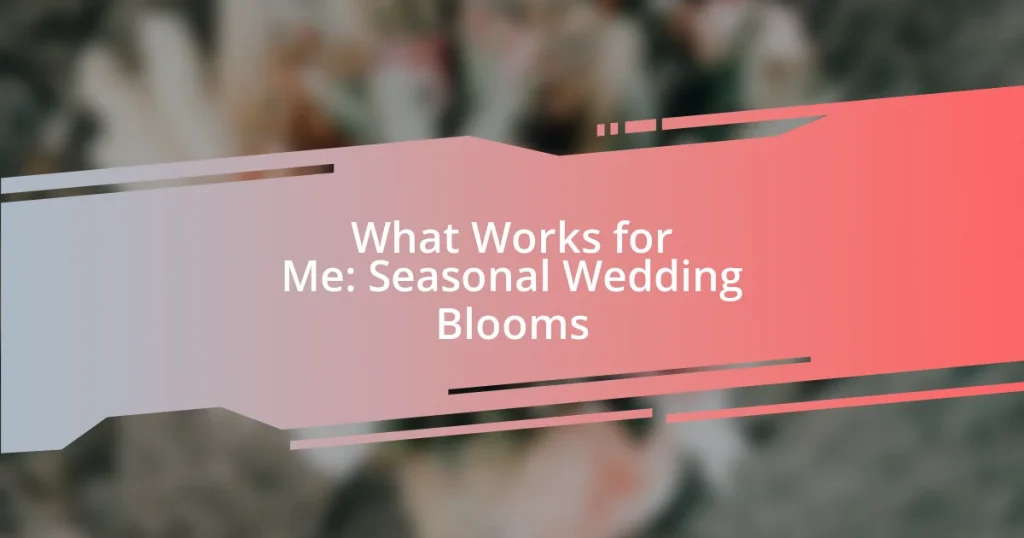Key takeaways:
- Floral design involves creating balanced arrangements that consider color theory and emotional significance of flower choices.
- Essential tools for successful floral design include quality floral scissors, floral foam for stability and hydration, and appropriately sized containers for visual balance.
- Starting a floral design business requires market understanding, budgeting for expenses, and effective networking to build client relationships.
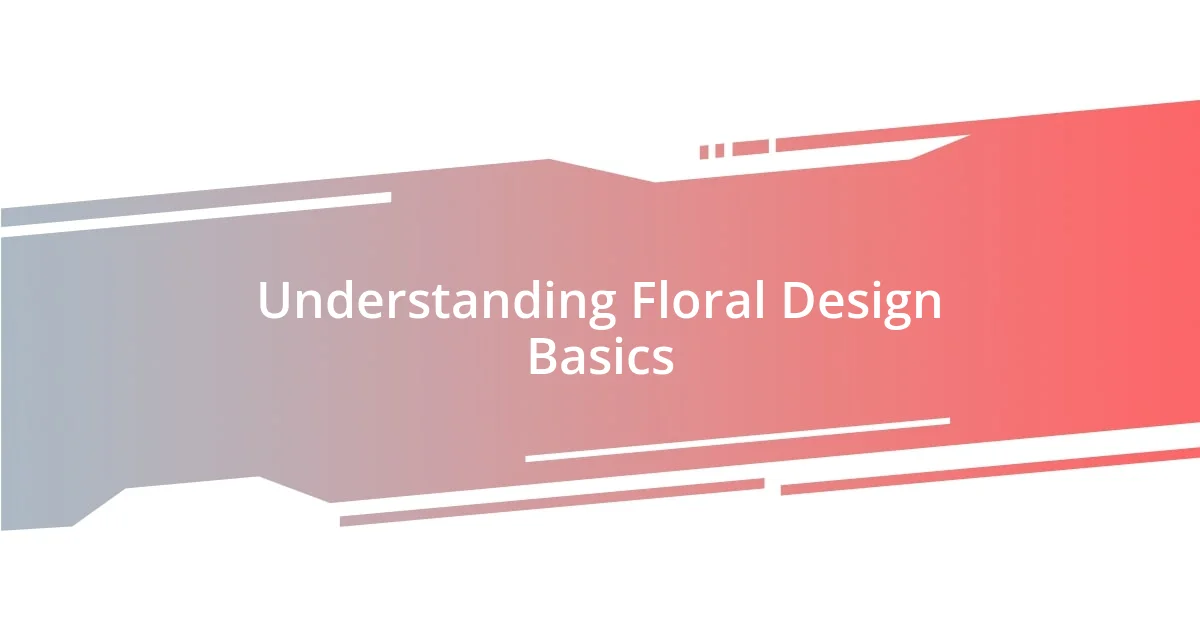
Understanding Floral Design Basics
Floral design is more than just selecting pretty flowers; it’s about creating a harmonious composition that tells a story. I remember the first time I arranged flowers for a friend’s wedding. The thrill of combining colors and textures to reflect their love was both challenging and rewarding, making me realize how deeply personal floral design can be.
An essential element in floral design is understanding balance and proportion. Have you ever noticed how some arrangements feel heavy on one side? This unbalance can disrupt the overall aesthetic. I learned quickly that a well-thought-out arrangement must consider height, width, and visual weight to create a pleasing look that draws the eye in.
Color theory also plays a crucial role in floral arrangements. I’ve often experimented with contrasting colors, and it’s fascinating to see how different hues can evoke emotions. For instance, combining vibrant yellows and calming blues can create a joyful yet serene vibe. Isn’t it amazing how just a splash of color can change the mood of a space?
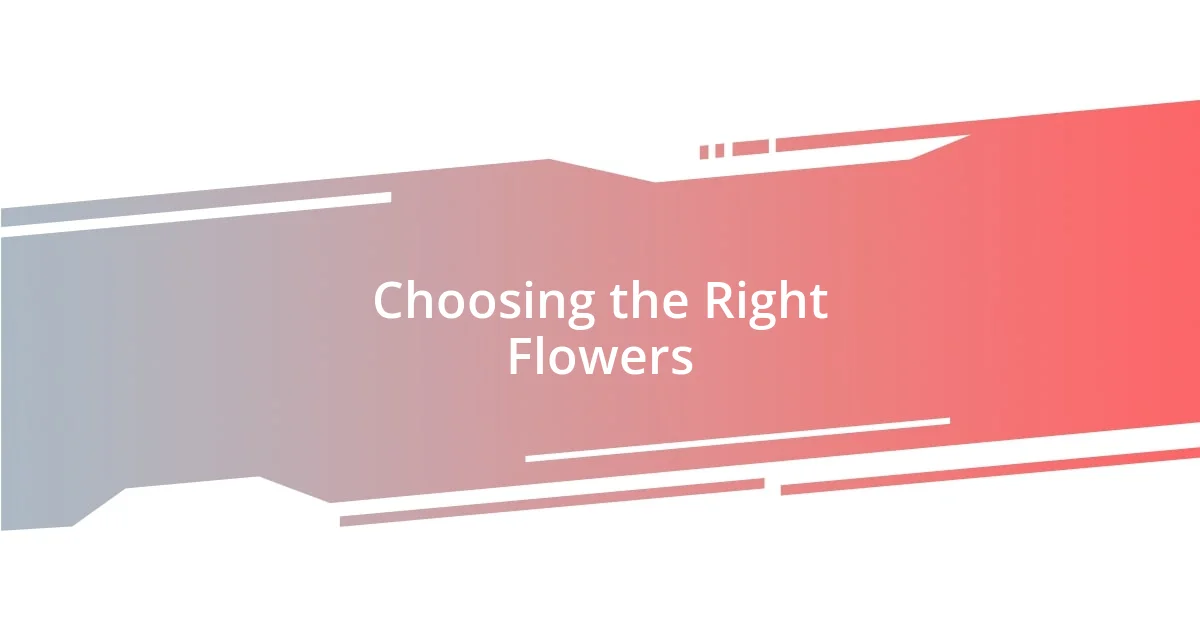
Choosing the Right Flowers
Choosing the right flowers can feel daunting, especially with the vast array available. I still vividly remember standing in a flower shop for the first time, overwhelmed by the vibrant colors and tantalizing scents. What helped me was considering the occasion—some flowers express joy, while others convey sympathy. The right flower not only enhances the event’s essence, but it also speaks to the emotions involved.
Here are some key factors to consider when selecting flowers:
- Seasonality: Choose flowers that are in season for better freshness and cost-effectiveness.
- Symbolism: Different flowers carry unique meanings; for instance, roses symbolize love, while lilies often represent purity.
- Color Palette: Think about the overall color scheme of your event or space. Certain colors can evoke specific feelings; soft pastels often create a tranquil atmosphere, while bold colors can energize a room.
- Scent: Aromatic flowers can enhance the sensory experience, but be mindful of overpowering scents that might clash.
- Durability: Some flowers are more resilient than others. For a long-lasting arrangement, consider varieties like chrysanthemums and alstroemeria.
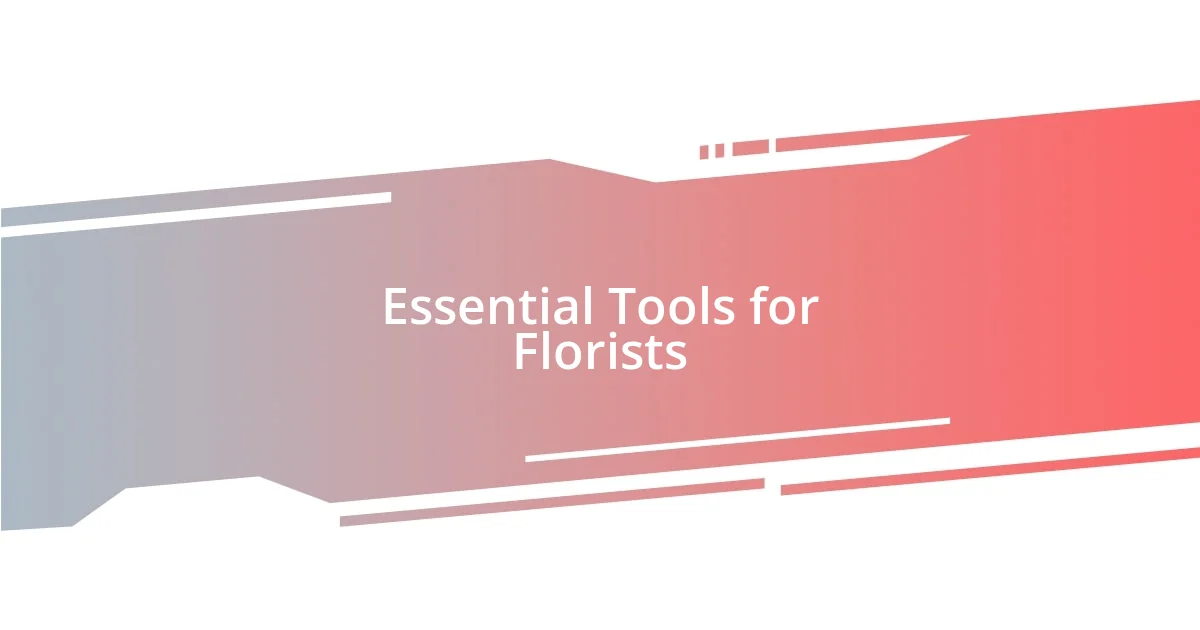
Essential Tools for Florists
In floral design, the right tools can make all the difference in creating stunning arrangements. When I first started, I was surprised at how essential a good set of floral scissors was. They allow for clean cuts, which not only keeps flowers looking fresh but also encourages better water uptake. I learned the hard way that dull scissors can lead to bruised stems and a wilted end result, so investing in quality tools was a game-changer for me.
Another crucial tool is floral foam. Initially, I was skeptical about using it. However, once I understood how it helps hold flowers in place while providing hydration, it completely transformed my arrangements. This medium also allows for greater creativity, letting me experiment with more complex designs that truly showcase each bloom’s beauty.
Last but certainly not least, I can’t stress the importance of a sturdy floral container. Choosing the right vase or vessel can enhance the overall presentation of an arrangement. During a workshop, I made a mistake by selecting a container that was too small for the volume of flowers, which resulted in a cramped and awkward display. A well-sized container not only complements the floral design but also supports the arrangement’s visual balance.
| Tool | Purpose |
|---|---|
| Floral Scissors | To make clean cuts for better hydration and longevity of flowers. |
| Floral Foam | To secure stems in place while providing hydration, allowing for more complex arrangements. |
| Floral Container | To enhance presentation and support visual balance in arrangements. |
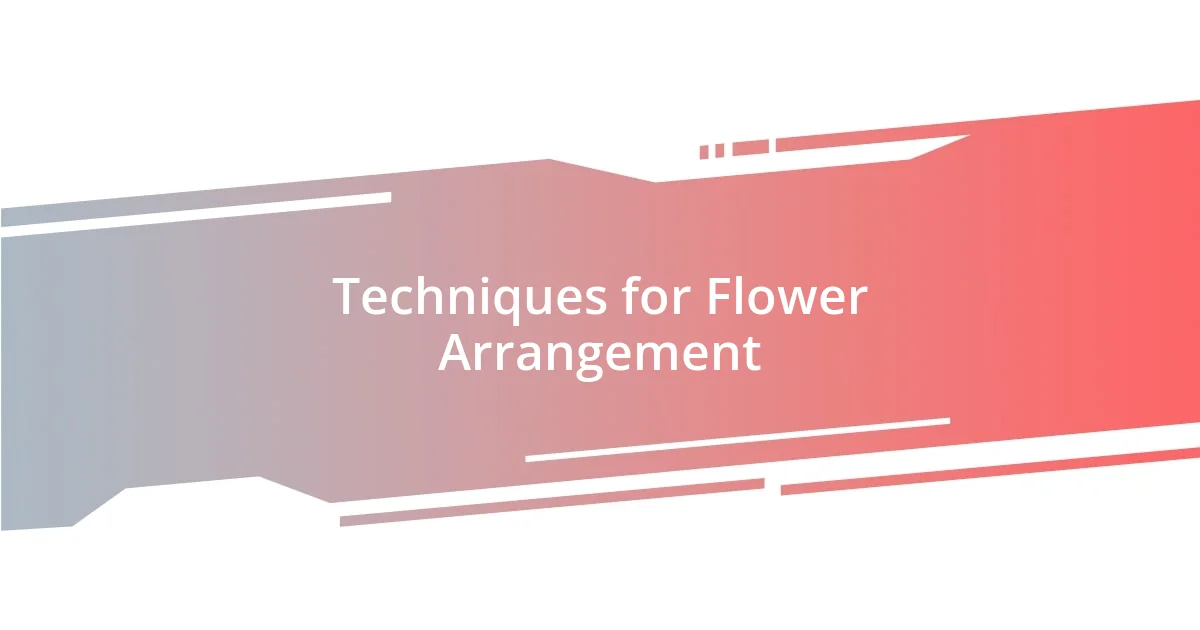
Techniques for Flower Arrangement
When it comes to flower arrangement, understanding the right techniques can completely transform your designs. One of my favorite methods is the “spiral technique,” which allows you to create a natural, textured look by layering flowers around a central point. I remember the first time I tried it; my arrangement seemed to come alive. Instead of just placing flowers haphazardly, the spiral method intertwined their stems in a way that felt like they were dancing together.
Another technique I frequently employ is the “triangular arrangement.” This style emphasizes height and balance, drawing the viewer’s eye upward. I was initially hesitant because I thought it would be complicated, but honestly, it’s all about choosing three focal points. Once I figured it out, my arrangements took on a whole new dynamic. Have you ever noticed how a well-balanced floral display can affect the mood of a space? I know it does in mine; it feels more inviting and harmonious.
Lastly, I can’t emphasize enough how important the ‘cutting angle’ is for flower stems. A significant lesson for me came during a workshop where I saw a pro demonstrating how a 45-degree cut maximizes water intake. I used to think any cut would suffice, but this simple adjustment made my arrangements last significantly longer! It’s incredible how such a small detail can impact longevity. Just a small angle change—who would have thought? Remember, even small steps can lead to stunning results.
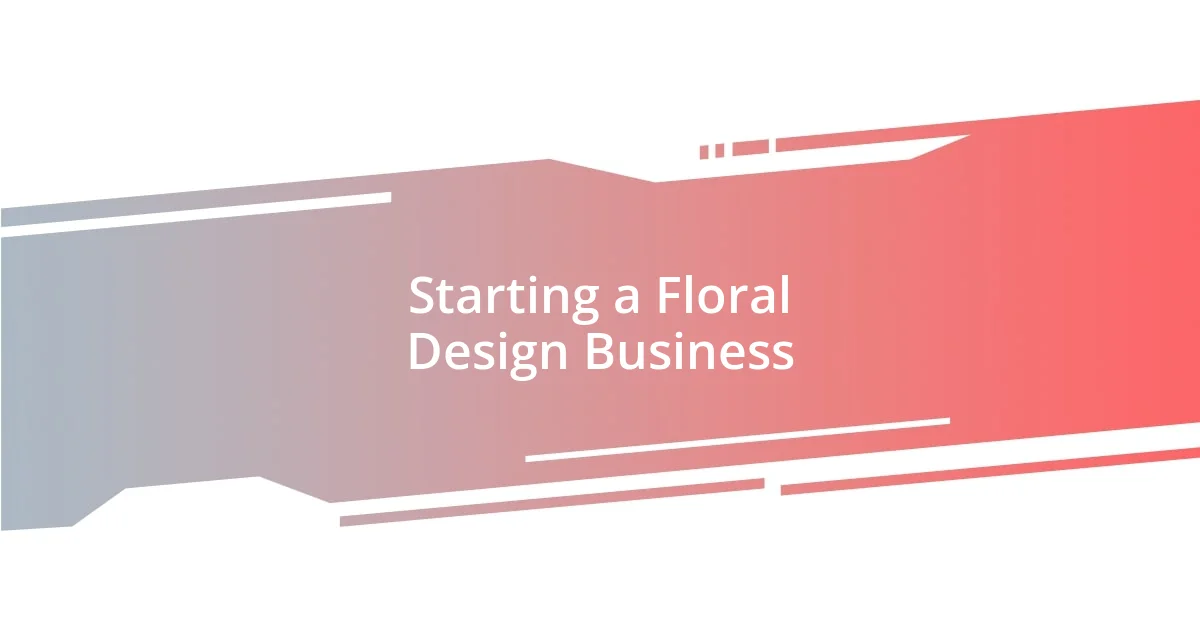
Starting a Floral Design Business
Starting a floral design business requires more than just a passion for flowers; it demands a clear understanding of the market and a solid business plan. When I decided to turn my floral hobby into a business, I quickly realized the importance of knowing my local competition and the preferences of my target customers. I remember visiting local flower shops and observing their offerings, which helped me identify a unique niche that I could fill.
Budgeting is another crucial element that can’t be overlooked. In my early days, I underestimated the initial expenses, from sourcing high-quality blooms to marketing my services. I found that creating a detailed budget, including every possible cost, helped me stay on track financially. Have you ever thought about how unpredictable expenses can throw you off course? It’s definitely something I learned the hard way, ensuring that I always kept a little cushion for those unexpected costs.
Lastly, networking played a significant role in my journey. I recall attending local bridal shows not just to promote my own designs but to connect with other vendors. Establishing relationships with event planners and photographers opened doors for collaborations that I wouldn’t have imagined at the outset. Have you considered how networking can amplify your visibility? It certainly made a positive impact on my business and helped me grow my client base more quickly than I anticipated.
